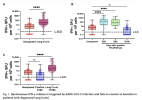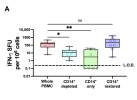People could tell you, though?
I think the idea is to have an objective test for a process. I think we may get into a muddle about terms here but my guess is that jnmaciuch is really suggesting that we need a test for the activity of Y, which will prove objectively that there is a biological cause for being in X when you say you are.
I think tests for both X and Y-->X would be useful in their own regard.
A test for X alone would be useful for the reason that
@Sasha already noted--proving that there is actually a biological phenomenon X that is happening when we claim PEM is happening. Ergo, it's not "all in our heads." As you already stated
@Jonathan Edwards, if X happens to be similar (or the same, even) as something more societally "legitimate" like viral myalgia, all the better for us.
Primarily, this would be useful on its own for the purposes of any treatment trial. We don't want to rely on subjective reports of PEM because of the heightened susceptibility for confounders.
E.g. if someone just went through one of the "cognitive restructuring" trials which convinced them that PEM isn't real, and then were asked to rate their PEM after the treatment, that would be an invalid measure. But if there is a marker for X, then we could actually check if the participant is still in the state of X after that treatment (even if they claim not to be).
Added: I think this could even be useful as an objective comparative measure for placebo effect for a drug trial. If placebo actually has the power to change something on the relevant biological pathway wrt PEM, a test for X could effectively quantify that.
After that, yes, it would be useful to have a test for the activity of Y leading to X (and that would be where the bulk of useful research happens, in my opinion)



